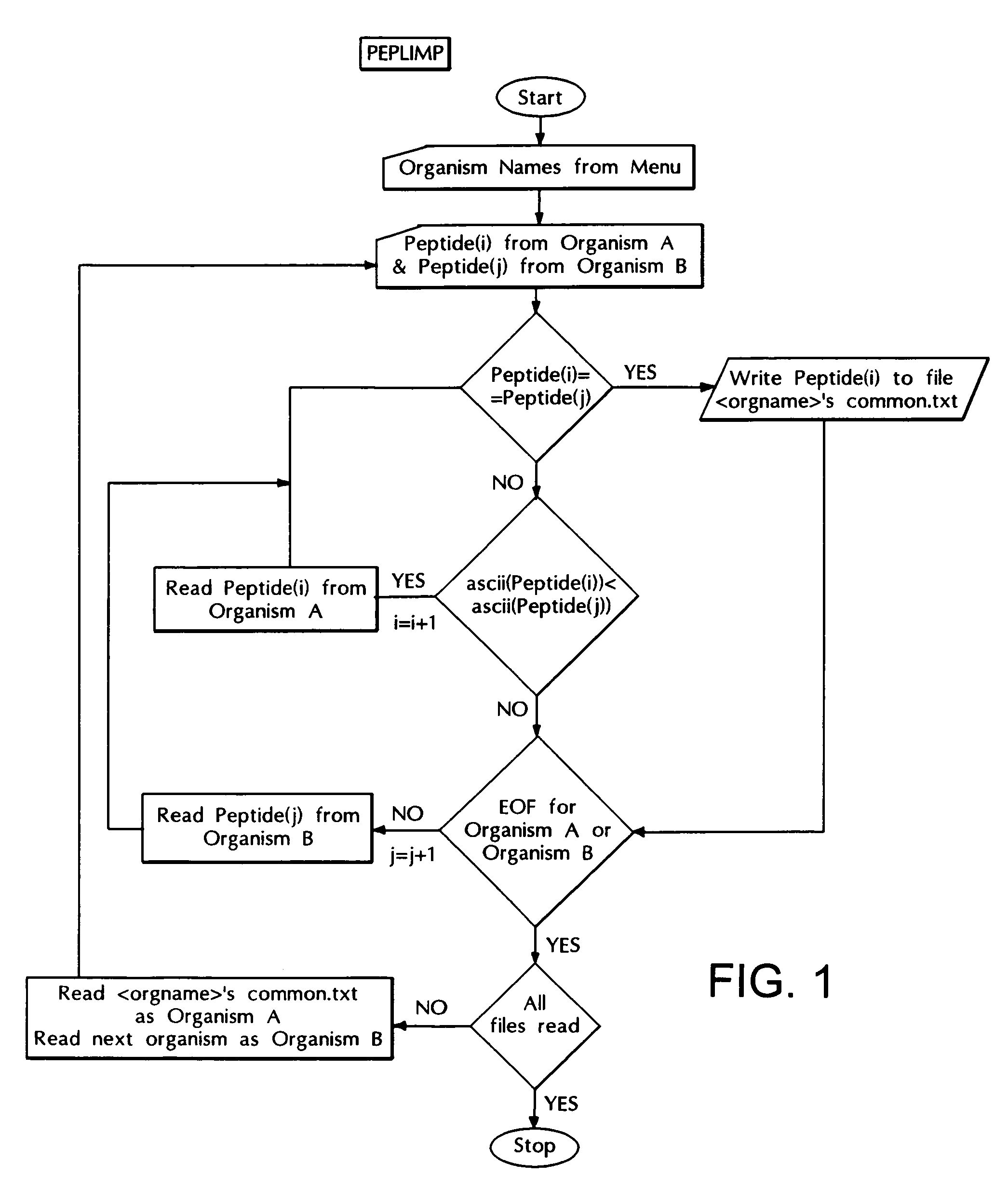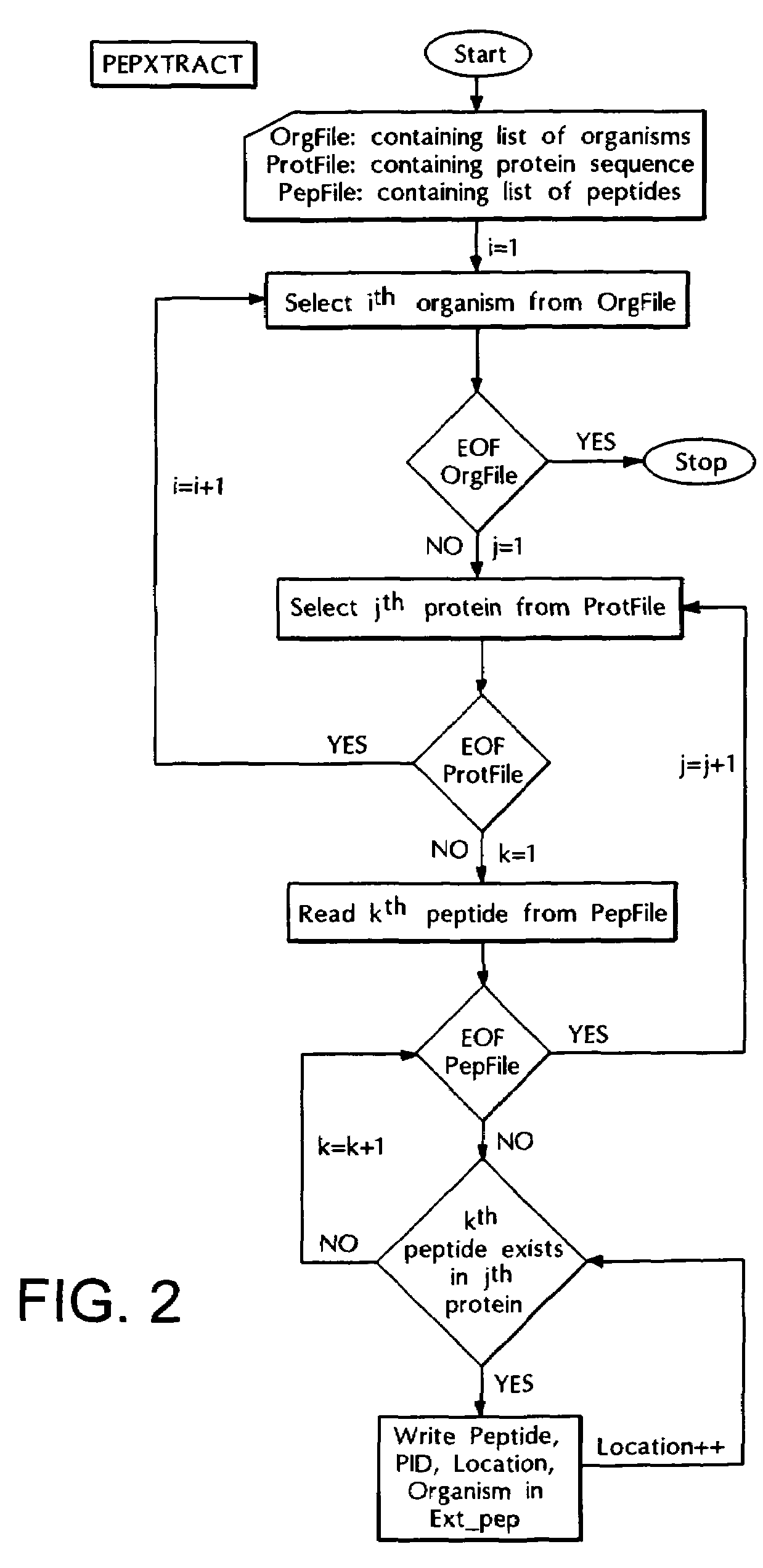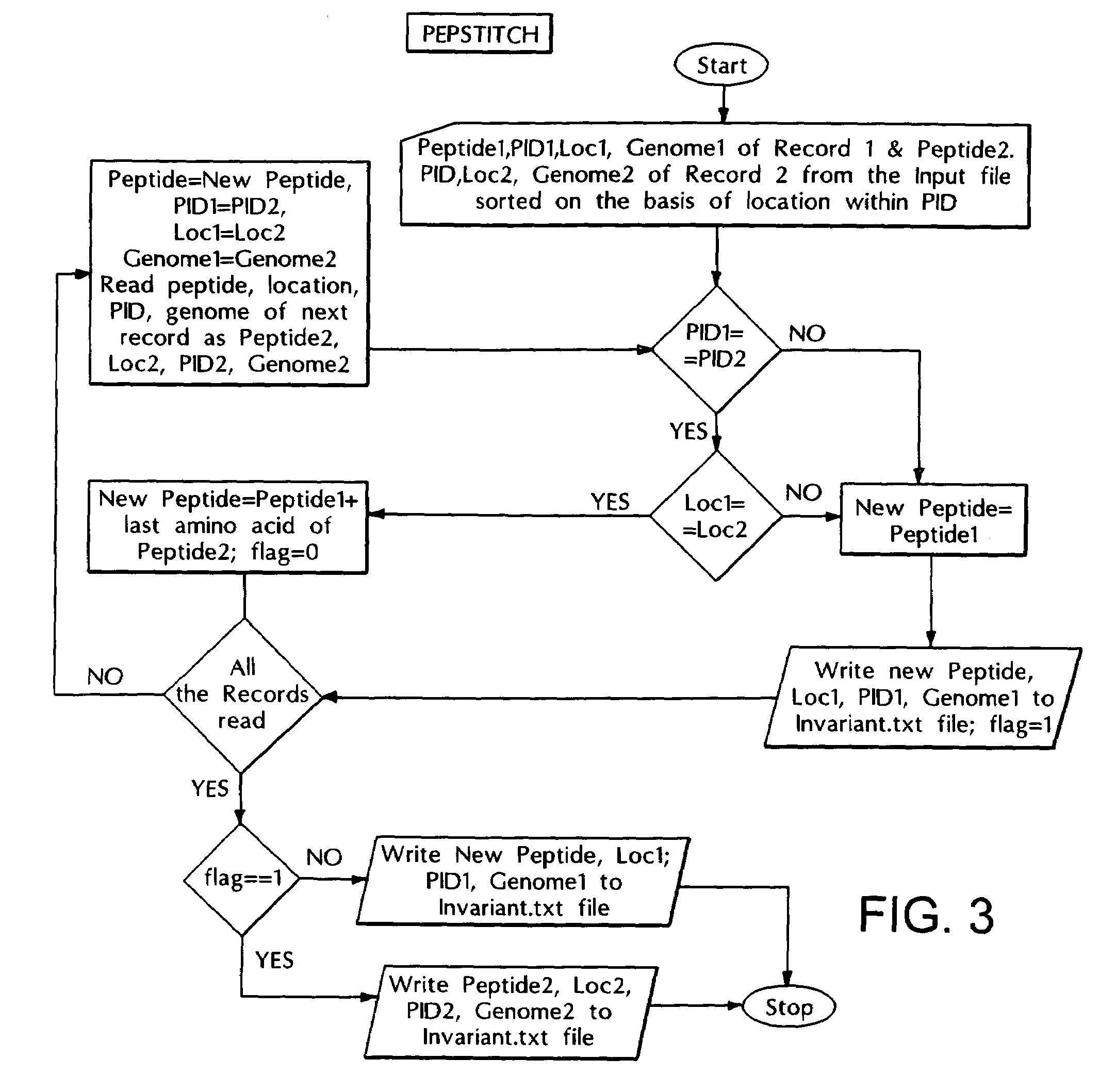Computer based method for identifying peptides useful as drug targets
a computer-based method and peptide technology, applied in the field of computer-based methods for identifying peptides useful as drug targets, can solve the problems of affecting the translation of proteins, rendering the current treatment procedures ineffective in curing infections due to bacterial pathogens, and methods not designed to do a genome-wise comparison
- Summary
- Abstract
- Description
- Claims
- Application Information
AI Technical Summary
Benefits of technology
Problems solved by technology
Method used
Image
Examples
example 1
1. The Peptide Library Creation Program (PEPLIB)
[0087]The purpose of the program is to create a non-redundant peptide library of user specified window length ‘N’ of a given genome by sliding the window by one amino acid residue at a time. The program works as follows:
[0088]The internet downloaded FASTA format files obtained from the National Center For Biotechnology Information (NCBI), database were saved by the name ,pep and passed as input to the PERL program which creates the unique peptides of length as specified at the time of execution.
Input / Output file format:
[0089]Downloaded Files and their format:[0090].pep:file which stores the annotation & the protein sequence refers to[0091]Tb (Mycobacterium tuberculosis) Bs (Bacillus subtilis) Mg (Mycoplasma genitalium) Mp (Mycoplasma pneumonoia) Ec (Escherichia coli) Hp (Helicobacter pylori) Hi (Haemophilus influenzae)
[0092]Format: FASTA[0093]“>gi|”[0094]
[0095]For example,[0096]>gi|2808711|emb|CAA16238.1|dnaA[0097]MTDDPGSGFTTVWNAVVSEL...
example 2
The Peptide Library Matching Program (PEPLIMP)
[0103]The purpose of the program is to compare the user defined peptide libraries with each other and report the common / unique peptides. The output files of the program PEPLIB are used as input for the PEPLIMP program. As the program is executed the user is prompted to select the libraries that are to be compared. Depending upon the libraries selected an output file is generated having common peptides (FIG. 1). Comparison of 8-mer peptide libraries of the above mentioned seven organisms resulted into 164 eight-mer peptides.
[0104]Comparison of four pathogenic organisms such as Mycobacterium tuberculosis, Helicobacter pylori, Mycoplasma pneumonia and Haemophilus influenzae resulted in 206 invariant peptides and comparison of three non-pathogenic organisms such as Bacillus subtilis, Mycoplasma genitalium and Escherichia coli resulted in 601 invariant peptides. The comparison tree looks like:
[0105]
example 3
The Peptide Extraction Program (PEPXTRACT)
[0106]This program takes the output of PEPLIMP program i.e., all the invariant peptides as input and locates these peptides in the protein sequences from the original database and labels them with the protein identification number (PID), location and organism name for further analysis. The logic circuit of this program is explained in the flow chart shown in FIG. 2.
PUM
| Property | Measurement | Unit |
|---|---|---|
| Electrical conductance | aaaaa | aaaaa |
Abstract
Description
Claims
Application Information
 Login to View More
Login to View More - R&D
- Intellectual Property
- Life Sciences
- Materials
- Tech Scout
- Unparalleled Data Quality
- Higher Quality Content
- 60% Fewer Hallucinations
Browse by: Latest US Patents, China's latest patents, Technical Efficacy Thesaurus, Application Domain, Technology Topic, Popular Technical Reports.
© 2025 PatSnap. All rights reserved.Legal|Privacy policy|Modern Slavery Act Transparency Statement|Sitemap|About US| Contact US: help@patsnap.com



